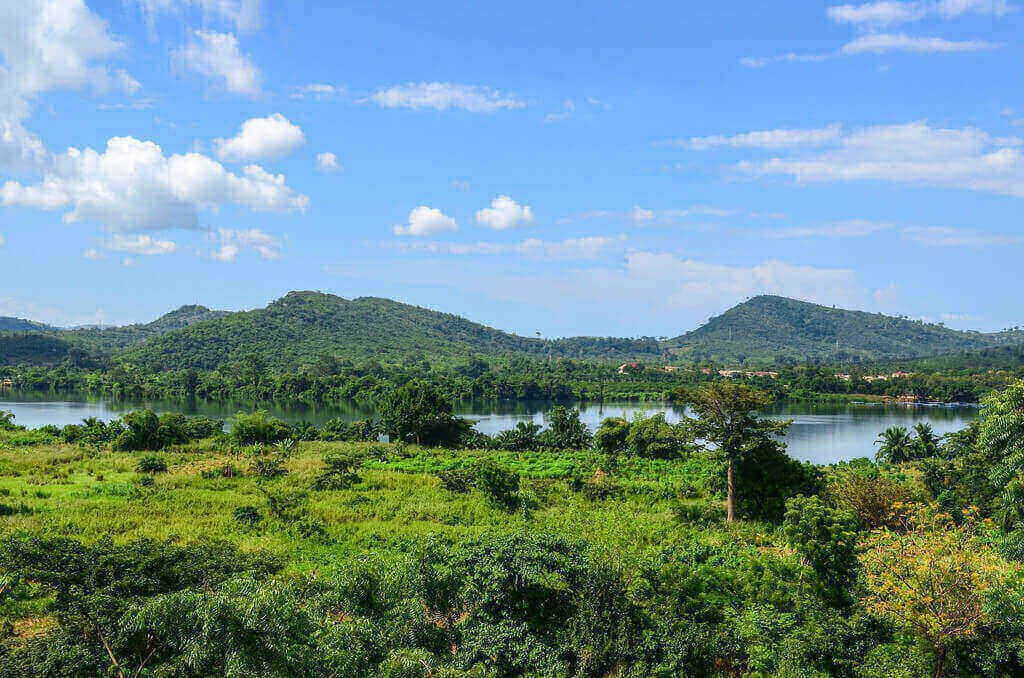
Dams play a major role in providing a proper structured outlet for water gushing out with great pressure around waterfalls and major rivers that aims at providing hydroelectric power. Based on the water storage capacity, the list of top 10 largest dams in the world is shown below.

The world’s tenth biggest dam, Robert Bourassa Dam creates the Robert-Bourassa Reservoir with capacity of 61.7 billion cubic meters covering a surface area of 2,815 sq. kms. The dam was constructed from 1974 to 1981 was owned by Hydro-Québec impounding the La Grande River in northern Quebec, Canada.

Zeya Dam, the ninth largest dams based on reservoir capacity was built on the Zeya River in the Amur Oblast of Russia and constructed by Zeyagesstroy and Bureyagesstroy from 1964 to 1975. With a storage capacity of 68.42 billion cubic metres, the reservoir covers a surface area of 2,419 sq.km including six generating units with a combined installed capacity of 1,290MW. This power plant features the world’s first adjustable-blade diagonal-flow turbines.

Krasnoyarsk Dam, Russia, the world’s eighth largest dams, impounds the Yenisey River and was constructed from1956 to 1972. The dam creates the Krasnoyarskoye reservoir with a storage capacity of 73.3 billion cubic metres that covers a surface area of 2,000km2 and was designed with a flood discharge capacity of 20,400 cub.mt per second.

W.A.C Bennett Dam, the seventh largest dams, was constructed on the Peace River in British Columbia, Canada from 1961 to 1967. With a storage capacity of approximately 74 billion cubic metres, it covers a surface area of 1,773 sq.km and can be operated by B.C Hydro with a height of 183m and crest length of 2,068m.

The Aswan High Dam, the sixth biggest dam based on water storage capacity impounds the River Nile and creates the reservoir, Lake Nasser. The reservoir has a water storage capacity of 132 billion cubic metres which was constructed from 1960 to 1968 that serves the irrigation needs of both Egypt and Sudan by generating power, controlling flood and helps in improving navigation across the Nile.

Guri, the world’s fifth biggest dam, creates the Guri Lake reservoir with a storage capacity of 135 billion cubic metres that covers about 4,000 sq. kms. The dam operated by CVG Electrification del Caroni CA(Edelca) provide the 70% of the country’s electricity needs.

The Daniel Johnson Dam, the fourth biggest in the world, impounds the Manicouagan River and creates the Manicouagan Reservoir with a storage capacity of 139.8 billion cubic metres that covers the surface area of 1,973 sq.km. The dam which is also known as Manic 5 Dam is owned by Hydro-Québec and was constructed from 1959 to 1968. The dam also touted as the world’s biggest hollow body multiple-arch-and-buttress dam features 14 buttresses and 13 arches and was constructed using 2.2 million cubic metres of concrete.

Akosombo dam, the third biggest dam in the world by water storage capacity is the world’s biggest reservoir by surface area. The dam located in Ghana was constructed on the Volta River, from 1961 to 1966 covers the surface area of about 8,500km2 Lake Volta and impounds a mammoth 144 billion cubic metres of water. The dam serves the purpose of electricity generation and also provides a livelihood for about 300,000 people through fisheries in the lake.

Bratsk Dam, the second largest dams in the world, is located in Siberia, Russia with 169.27 billion cubic metres water storage capacity. The concrete gravity dam constructed from 1954 to 1964 by Bratskgesstroy impounds the Angara River where the reservoir covers a surface area of 5,540 sq.km.

Kariba Dam, the world’s largest dam based on water storage capacity creates Lake Kariba, with a storage capacity of 185 billion cubic metres of water and a surface area of 5,580km2 which is located at the former Kariwa (Kariba) Gorge. The double curvature concrete arch dam, owned by Zambezi River Authority was constructed between 1955 and 1959 by Impresit of Italy was designed to avert a one in 10,000-year flood event.